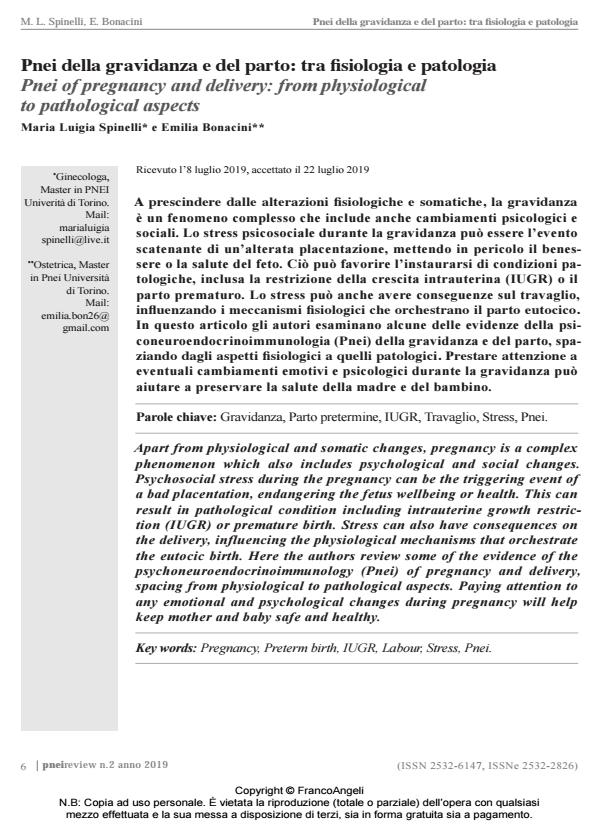Pnei of pregnancy and delivery: from physiological to pathological aspects
Journal title PNEI REVIEW
Author/s Maria Luigia Spinelli, Emilia Bonacini
Publishing Year 2019 Issue 2019/2
Language Italian Pages 12 P. 6-17 File size 104 KB
DOI 10.3280/PNEI2019-002002
DOI is like a bar code for intellectual property: to have more infomation
click here
Below, you can see the article first page
If you want to buy this article in PDF format, you can do it, following the instructions to buy download credits

FrancoAngeli is member of Publishers International Linking Association, Inc (PILA), a not-for-profit association which run the CrossRef service enabling links to and from online scholarly content.
Apart from physiological and somatic changes, pregnancy is a complex phenomenon which also includes psychological and social changes. Psychosocial stress during the pregnancy can be the triggering event of a bad placentation, endangering the fetus wellbeing or health. This can result in pathological condition including intrauterine growth restriction (IUGR) or premature birth. Stress can also have consequences on the delivery, influencing the physiological mechanisms that orchestrate the eutocic birth. Here the authors review some of the evidence of the psychoneuroendocrinoimmunology (Pnei) of pregnancy and delivery, spacing from physiological to pathological aspects. Paying attention to any emotional and psychological changes during pregnancy will help keep mother and baby safe and healthy.
Keywords: Pregnancy, Preterm birth, IUGR, Labour, Stress, Pnei.
Maria Luigia Spinelli, Emilia Bonacini, Pnei della gravidanza e del parto: tra fisiologia e patologia in "PNEI REVIEW" 2/2019, pp 6-17, DOI: 10.3280/PNEI2019-002002